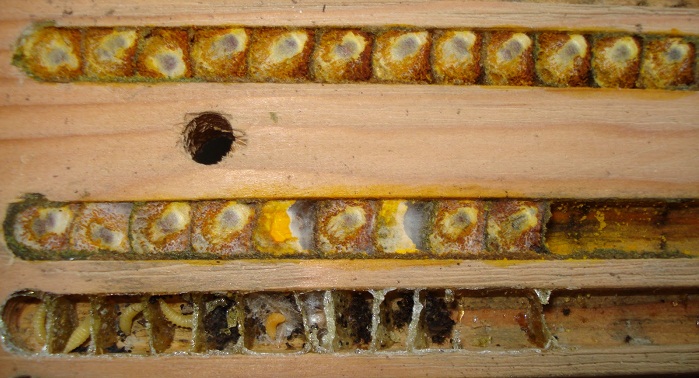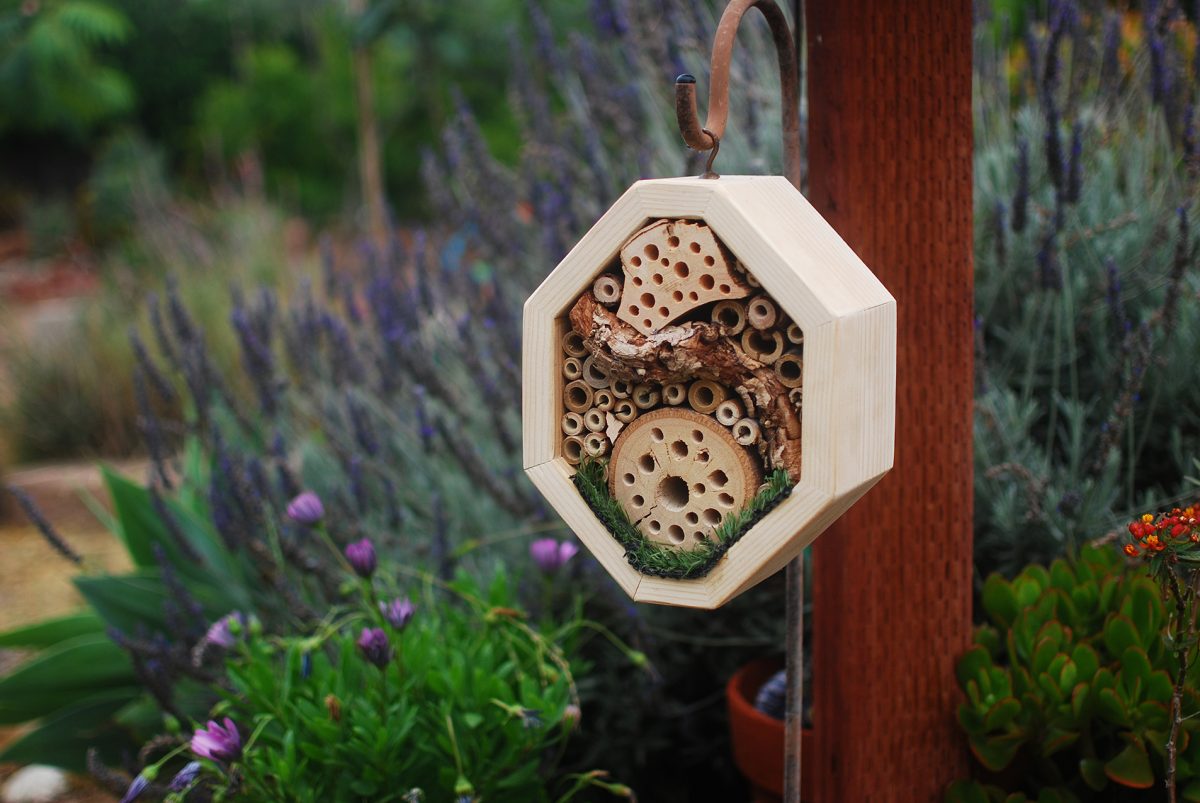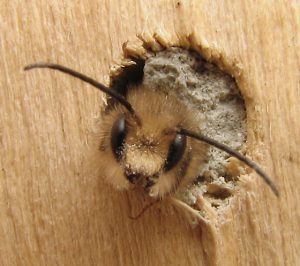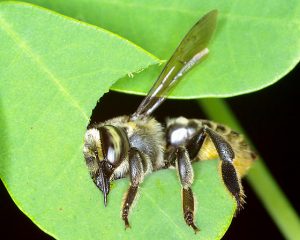Now here’s a project that doesn’t take too much time and is simply perfect for the whole family. The materials used for this are all items you can hunt for in parks or woods and make for a great excuse to go on a hike. With a little help from adults, kids can have a blast assembling these amazing and beneficial homes.
What I’m looking to attract are solitary bees. Many people think that honey bees and bumble bees are the only types of bees around. The fact is that they only represent about 10% of the bee species around and aren’t even native to North America. A majority of bees don’t make honey, but one thing that they do make is excellent pollinators!
Just one solitary bee, like the mason bee, can do the pollination work of 120 honey bees! They lack the little pollen baskets that honey bees have so they visit flowers way more often than social bees. And because they don’t have that golden treasure trove to protect, they don’t swarm and are safe around people and pets. There are three basic types of solitary bees but all come in varying shapes and sizes.
Solitary bees will either chew tunnels with their strong mandibles (like the carpenter bees) or they will seek out existing burrows left by beetles or hollow stems (like the mason or leaf cutter bee) to lay their eggs. They’ll crawl to the back to deposit an egg and then leave a lovely little packed lunch of pollen and nectar for the baby to eat. She’ll leave just enough room for the larvae to develop and then seal it off and repeat the process until the cavity is filled.

She can control whether the egg is male or female and lays females towards the back as males hatch before females do. That way the bees can emerge without blocking one another. I guess at least in the bee world, the males mature faster.
These types of bees are so often overlooked when people think about the recent decline in pollinators. Yet they do far more work than the honey bees do in that regard. All the more reason to do a cool project like making a place for them to live. Urban environments are not very forgiving when it comes to providing a home to these useful critters. Gardeners seldom leave dead wood laying around or old stems from plants that the bees would normally call home.
So not only is this a simple and fun project to get the whole family involved in, you’re doing a great service which will only provide you with enrichment as well as a bountiful crop! You and the kids can monitor the tunnels and see what variety of species have moved in. On rainy days, you’ll see them in there staying dry but most of the time you’ll know they’re using the home when you see the ends sealed up. This would also make for a great project for schools, especially those that have gardens.
So let’s get to the fun part…the building of the house. Continue reading “We Have a Vacancy: Building a Bug Hotel for Solitary Bees”





